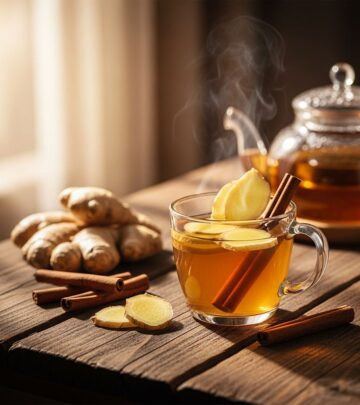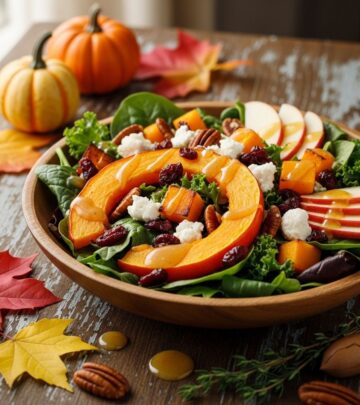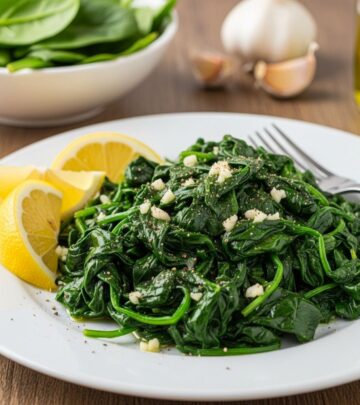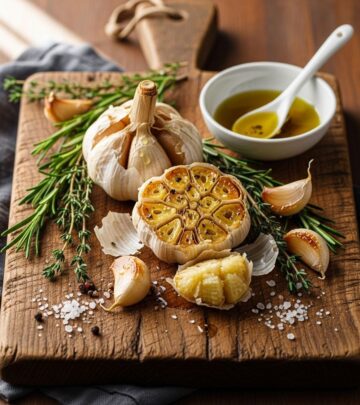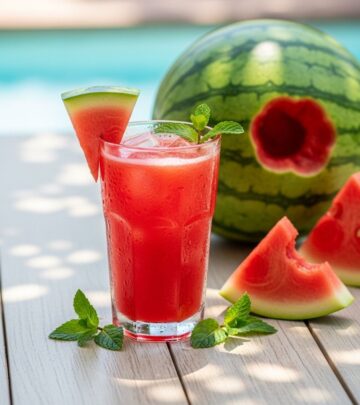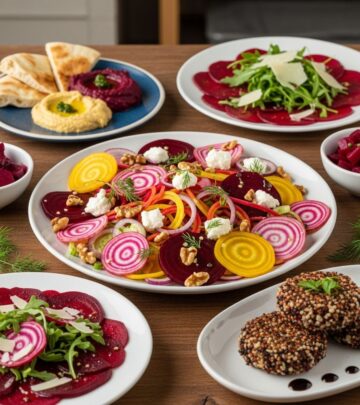A Culinary Guide to Fennel: From Bulb to Pollen
From crisp bulbs to fragrant pollen, every part delivers a fresh twist to recipes.
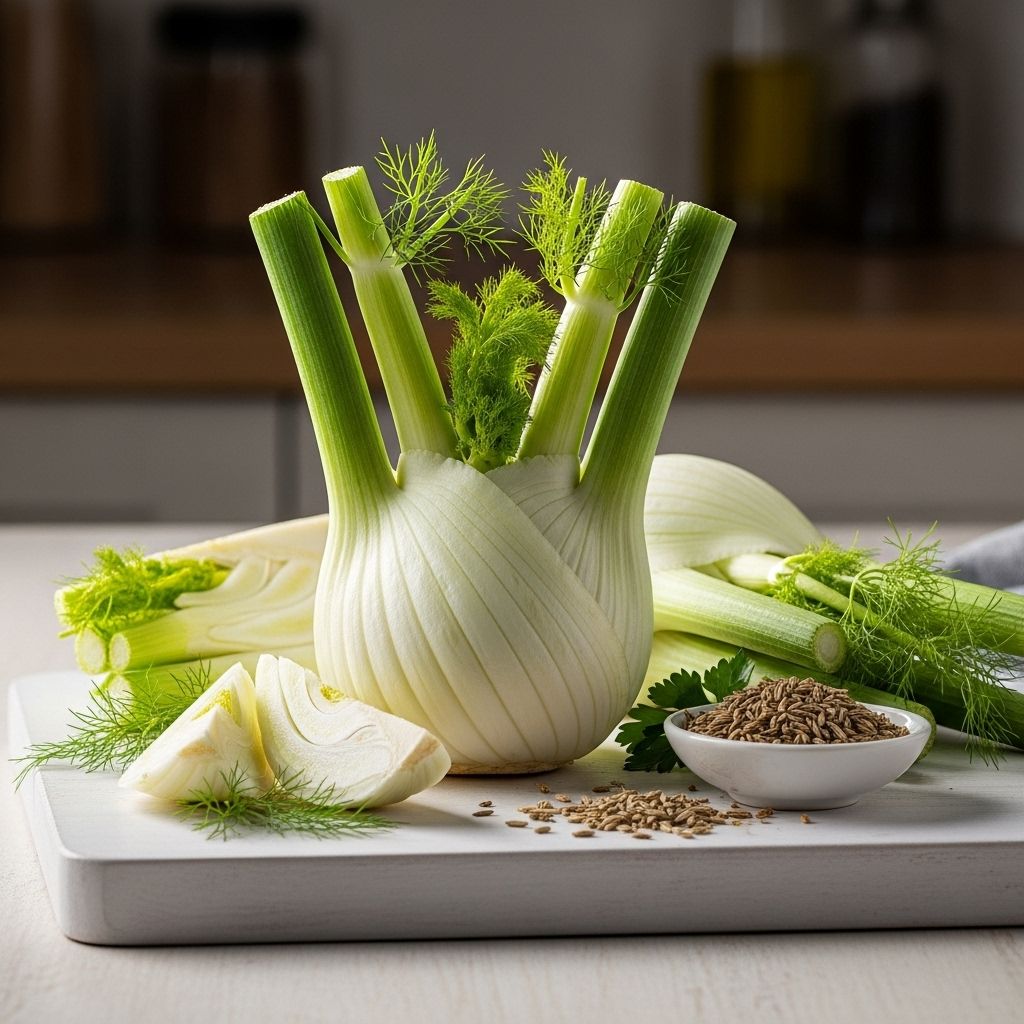
What Is Fennel?
Fennel (Foeniculum vulgare) is a versatile flowering plant native to the Mediterranean, now cultivated worldwide. Recognized for its crisp bulb, feathery fronds, aromatic seeds, and golden pollen, fennel holds a revered place in both classic and modern cuisine. Known for its distinct licorice-like profile, fennel’s edible parts each offer unique flavors and textures, making it a multifaceted addition to countless dishes.
Fennel Anatomy: Bulb, Fronds, Seeds, and Pollen
Every part of the fennel plant—from its base to its blooms—can be used as an ingredient:
- Bulb: The crisp, white base is treated as a vegetable, offering sweet, slightly aniseed flavor and a crunchy texture. It can be eaten raw or cooked.
- Fronds: The delicate, dill-like leaves are used as a fresh herb for garnishing and seasoning.
- Seeds: These oval-shaped seeds, gathered after flowering, provide a pungent, sweet flavor often used in sausages, breads, and spice blends.
- Pollen: The golden powder collected from fennel blossoms is extraordinarily aromatic, prized for imparting complex flavor notes of honey, citrus, and licorice to refined dishes.
Fennel Flavor Profile and Use of Edible Parts
Fennel’s distinctiveness comes from its licorice-like sweetness, complemented by hints of citrus and herbal freshness. Here’s how its edible components shine:
| Part | Flavor Notes | Best Uses |
|---|---|---|
| Bulb | Crisp, subtly sweet, mildly licorice | Raw salads, roasting, grilling, braising |
| Fronds | Herbal, light, grassy | Garnishes, pestos, sauces |
| Seeds | Pungent, sweet, spicy, intense anise | Seasoning, sausage, breads |
| Pollen | Potent, floral, honeyed, citrus-laced | Finishing spice for meat, seafood, vegetables |
How to Use Fennel in the Kitchen
With its combination of flavors and textures, fennel is a chef’s utility tool. Let’s explore its main culinary applications:
Raw Applications
- Salads: Shaved raw bulb adds crunch and sweet freshness, pairing well with citrus, apple, or nuts.
- Slaws: Matchstick-cut bulb and fronds offer brightness in vegetable slaws or as a topping for seafood.
Cooked Applications
- Roasting & Grilling: Sliced bulb caramelizes beautifully, becoming tender and rich in flavor.
- Braising & Soups: Slow cooking with wine or broth softens fennel, blending its sweetness into stews and soups.
- Sauteing: Thinly sliced bulb delivers nuanced flavor in pasta sauces or vegetable side dishes.
Baked Goods and Savory Dishes
- Seeds: Use in rye bread, Italian sausage, or spice rubs.
Garnishes
- Fronds: Sprinkle over finished dishes, soups, or salads for visual appeal and flavor.
Fennel Pollen: Chef’s Secret Ingredient
Known as “culinary gold,” fennel pollen elevates recipes with its concentrated aroma. It is sprinkled over roast meats, fish, vegetables, pasta, or even desserts, imparting vibrant complexity. Some chefs use it in spice rubs or finishing oils for a unique kick.
Popular Fennel Recipes and Serving Ideas
- Spaghetti with Fennel Pollen: Boil spaghetti and toss with butter, garlic, orange zest, mint, and a generous teaspoon of fennel pollen for a bright, aromatic pasta.
- Alder Roasted Salmon: Rub salmon with fennel pollen, olive oil, salt, pepper, and cook on alder wood for a deeply savory dish enhanced by hints of licorice and citrus.
- Broiled Tomatoes with Goat Cheese: Top halved tomatoes with olive oil, salt and pepper, broil, add goat cheese, finish with fennel pollen, and broil again for a caramelized, tangy side.
How to Select and Store Fennel
Shopping for Fennel Bulb
- Look for bulbs that are firm, heavy, and without brown spots or cracks.
- Fronds should be fresh, green, and feathery, not wilted or yellow.
- Avoid bulbs that are rubbery or discolored.
Buying Fennel Seeds and Pollen
- Fennel seeds are sold whole or ground in spice aisles; prefer whole seeds for maximum flavor.
- Fennel pollen, precious and potent, is found at specialty grocers or online.
Storing Fennel Bulb
- Wrap bulbs tightly in plastic and refrigerate. They keep fresh for up to a week.
- Fronds may be used immediately or kept wrapped and chilled; use within days for optimal flavor.
Storing Seeds & Pollen
- Keep dry seeds and pollen in airtight containers, away from heat and light.
- Use within six months for peak aroma and potency.
How to Prepare and Cut Fennel
Proper prep ensures the best flavor and texture:
- Trim the stalks: Remove the fibrous stems above the bulb. Save the fronds for garnishing.
- Slice off the bottom: Cut a thin slice from the root end.
- Halve the bulb: Slice vertically for stability.
- Remove the core (if desired): For salads or finer slices, cut out the tough center from each half.
- Slice as needed: Thin slices for raw use; thicker wedges for roasting or grilling.
Fennel Substitutes
If fennel is unavailable, consider these alternatives:
- Celery: Offers crunch but has a more neutral flavor.
- Bok choy: Mild taste and similar texture.
- Aniseed or tarragon: For flavor substitution in cooked dishes.
Fennel Nutritional Profile
Fennel is low in calories and a source of fiber, potassium, vitamin C, and antioxidants. Its seeds provide essential oils with digestive and anti-inflammatory effects.
Varieties of Culinary Fennel
- Florence Fennel: Grown for its bulb.
- Wild Fennel: Features thin stalks and is prized for its seeds and pollen.
- Bronze Fennel: Decorative with unique color; occasionally used for leaves and seeds.
Fennel’s Role in Global Cuisine
- Italian: Seed is used in sausages, bulb in salads, pollen as a finishing spice.
- French: Classic ingredient in bouillabaisse, soups, and herb blends.
- Indian: Seeds are ubiquitous in spice blends and as digestive aids.
- Middle Eastern: Aromatic seeds flavor breads, meats, and pickles.
Top Tips for Cooking with Fennel
- Braise with wine to coax out natural sweetness and mellow its bite.
- Roast at high temperatures for concentrated flavor and caramelization.
- Pair with citrus—especially oranges or lemons—for bright, balanced salads.
- Use fennel pollen sparingly: Just a pinch is needed due to its potency.
- Add seeds to homemade sausage for signature Italian flavor and aroma.
Frequently Asked Questions (FAQs)
What does fennel taste like?
All parts of fennel share a licorice-like sweetness. The bulb is milder and juicy, fronds are grassy-herbal, and seeds and pollen deliver potent, sweet anise notes.
Can I eat fennel raw?
Yes. Raw fennel bulb is crisp and refreshing in salads or slaws. Fronds also make a great herb garnish.
Is fennel the same as anise?
While they share similar flavors, fennel and anise are separate plants. Fennel has an edible bulb and fronds; anise does not.
How do I store fresh fennel bulbs?
Wrap in plastic and refrigerate for up to seven days. Use fronds within two days for peak freshness.
What are the benefits of fennel pollen?
Fennel pollen delivers a concentrated burst of licorice, citrus, and floral notes—ideal for finishing seafood, meat, and vegetable dishes.
Can fennel seeds be used like caraway or cumin?
Yes. Fennel seeds have sweet undertones—a good substitute for caraway or cumin in recipes where a sweet, aromatic note is welcome.
Related Spices and Pairings
- Dill: Similar fronds but milder, grassy taste.
- Caraway: Warm, earthy, substitutes in breads for fennel’s sweetness.
- Coriander: Citrus and floral notes match well with fennel’s profile.
- Tarragon: Licorice-like essence; an herbal alternative.
Fennel in Cocktails and Desserts
Fennel’s versatile aroma lends itself to creative uses in mixology and sweets:
- Infused syrups: Simmer fronds or seeds in simple syrup for herbal cocktails.
- Pollen shortbread: Incorporate pollen into butter cookies for intriguing sweetness.
Unlocking Fennel’s Flavor Potential
Fennel’s appeal is in its adaptability—it bridges sweet, savory, and herbal realms, making it indispensable across cuisines. Whether you’re dicing its bulb for salads, dusting pollen over seafood, or savoring its seeds in a loaf of bread, fennel rewards bold experimentation and attention to detail. The next time you shop, pick a crisp bulb, gather fronds, snap up aromatic seeds or golden pollen, and explore fennel’s many culinary stories on your plate.
Read full bio of Sneha Tete

